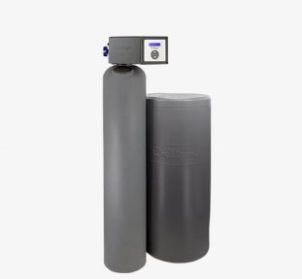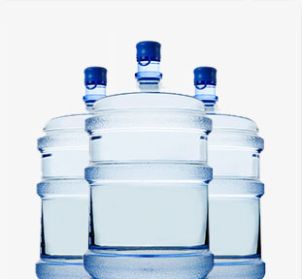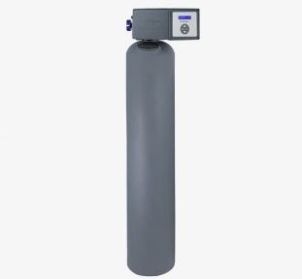
Study Finds Toxic ‘Forever Chemicals’ in Nearly Half of U.S. Tap Water

A group of dangerous substances known as “forever chemicals,” or PFAS, have been found to be in nearly half of tap water supplies in the United States, according to a recent study from the United States Geological Survey (USGS).
At least 45% of U.S. tap water is estimated to contain one or more types of these chemicals, which the U.S. Environmental Protection Agency (EPA) announced in March that it would seek to regulate PFAS in drinking water for the first time. The regulation process may take considerable time, but consumers do have options in the meantime.
There are select in-home water treatment solutions available today specifically designed to address PFAS in drinking water, including Culligan’s Aquasential® Smart Reverse Osmosis (RO) System. When configured with Culligan’s Total Defense or Total Defense + Mineral Cartridge cartridge, this system is tested and certified by an accredited 3rd party laboratory to NSF/ANSI 53 to reduce PFOA and PFOS in water. (PFOA and PFOS are part of the broader group of chemicals known as PFAS; they are the ones that have been made and used the most in the United States.)
What Are PFAS?
PFAS, which stands for per- and polyfluoroalkyl substances, emerged in the 1940s as repellents of fire, water, oil and stains. Their nonstick properties, ability to withstand extreme temperatures and resistance to degradation make them useful components for commercial and industrial products. They are commonly used in items such as nonstick cookware, fire-fighting foams, microwave popcorn bags, pizza boxes, cosmetics and water-resistant fabrics.
Though the EPA says most people come in contact with these “forever chemicals” through consumer products, we can also be exposed through the air we breathe or the foods we eat that could contain PFAS, like fish.
In addition, we can ingest PFAS if the water-soluble chemicals have entered our water supplies, which can happen over time when they find their way into the soil and then into groundwater or surface water.* An environmental watchdog group is tracking PFAS contamination in the U.S. and offers an interactive map to assist consumers. This resource has identified more than 2,800 locations where PFAS have been detected.
What is the EPA Doing?
The U.S. Environmental Protection Agency (EPA) has in the past warned that a certain concentration of manufactured chemicals in drinking water could be bad for our health. Now the regulatory agency is taking a major step to address PFAS.
In March 2023, the EPA issued a proposal for the first-ever national drinking water standards for these so-called “forever chemicals” that break down very slowly in the environment and in the human body. The rule pertains to two of the most widely used and studied compounds in the group, PFOA and PFOS, and to four additional PFAS and their mixtures.
The proposed regulation would require public water systems to monitor for the six PFAS, notify the public of their levels, and reduce the levels in drinking water if they exceed the proposed standards. The agency anticipates finalizing the rule by the end of 2023 following a period of public comment. Once the regulation is finalized, drinking water systems would have up to three years to comply with the standards. (Canada is also taking a closer look at regulations around PFAS in drinking water; see additional detail later in this article.)
Stricter Standards Have Emerged Over Time
The Safe Drinking Water Act gives the EPA the authority to set enforceable rules for drinking water contaminants and require monitoring of public water systems. Its latest move represents an evolution that has been largely guided by science.
In 2016, the EPA set lifetime health advisory levels at 70 parts per trillion (ppt) for PFOA and PFOS. On a practical level, that meant action needed to be taken to improve water when amounts of PFOA and PFOS exceeded 70 ppt.
Then, in June 2022, the EPA announced that even near zero traces of these synthetic compounds can have adverse health effects. The agency updated its lifetime health advisory levels for PFOA to 0.004 ppt and for PFOS to 0.02 ppt. Though health advisories are non-enforceable and non-regulatory, the guidance helps inform drinking water system operators, public health officials and consumers.
Under the March 2023 proposed rule, the EPA seeks to set the standard for PFOA and PFOS at 4 parts per trillion, a level the agency says they believe can be reliably measured. For PFNA, PFHxS, PFBS, and GenX chemicals, the EPA proposes not one standard for each but a limit for a mix of them. Unlike the previous health advisories, the rule would set Maximum Contaminant Levels (MCLs) which, if finalized, are legally enforceable.
Canadian Health Officials Have Also Proposed New Limits for PFAS in Water
Health Canada, meanwhile, is also reviewing the guidelines for PFAS in its country’s drinking water. The governmental department has released a draft objective that says the summed total of all PFAS measured in drinking water should not exceed 30 nanograms per liter (ng/L). It opened the proposal in February 2023 and is seeking input from the public and others.
Currently, per the Guidelines for Canadian Drinking Water Quality, the drinking water guideline for PFOS is a maximum acceptable concentration (MAC) of 0.0006 mg/L and for PFOA is a MAC of 0.0002 mg/L. The guidelines also note that, “The sum of PFOA and PFOS concentrations in drinking water divided by their respective MAC should not exceed 1.”
The new proposal, if finalized, would replace the two previous drinking water guidelines and nine screening values derived for individual PFAS.
EPA Rule Complements Other U.S. Governmental Actions
In the U.S., the proposed regulation isn’t the only measure the federal government is taking to limit PFAS.
With an eye on the prevalence of the problem, the Bipartisan Infrastructure Law has designated $5 billion in grant funding to reduce PFAS in drinking water in underserved communities in the U.S. The EPA has invited states and territories to apply for the first $1 billion to reduce PFAS and other emerging contaminants in drinking water. The funds can be used for efforts like testing water quality and installing treatment technologies.
As the EPA establishes more stringent standards for PFAS, many utilities will likely need to invest in certain advanced technologies. “It’s going to take time for municipalities to find solutions to meet the guidance,” says Chia Kung, director of drinking water product management for Culligan International. “The good news is we have products you can buy right now for your home that can help protect you from PFAS.”
*Contaminants may not be present in your water.
Related Articles
How To Get Rid of Coliform in Well Water
8 min read
Find A Location Near Me

Schedule Your Free
In-Home Water Test
Get better water in your home by scheduling an appointment with your local Culligan Water Expert.
Discover More
See All Articles

How To Get Rid of Coliform in Well Water
If you rely on a private well, your water quality is your responsibility — and coliform bacteria are one of the most important issues to watch for. Found in soil, […]
8 min read

Explore

Explore
Our Products

Water Softeners
With any of our soft water systems, get more out of your water-using appliances while spending less on energy and detergent.
View Products

Water Delivery
There’s never been a better time to enjoy the convenience of scheduled bottled water deliveries from the Culligan® Water Experts
View Products

Water Filtration Systems
Culligan's water filtration systems have improved water quality for thousands of families worldwide.
View Products
